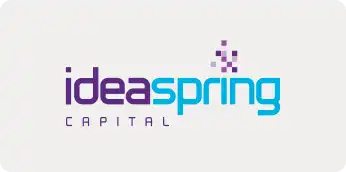Some of us think that Outbound marketing is dead and have given up on it. Many of us still do outbound marketing strategies but are not sure how to make it feel natural and not look like a spammy outreach. Even for me, as an inbound marketer at heart, I believe content is the King. But today, Vengat from Klenty, really woke me up (and many others) to an all new world of Outbound Marketing.
Thanks to SaaSBoomi and yes, I’m going to share those valuable insights from the roundtable event held in Singapore, which showed us the bigger picture of how to unlock the power of outbound marketing. Let’s go!
1/ Find your PMF & have conviction on the ICP before firing your GTM engine
For any early stage SaaS start-up building from 0 to 1, it’s crucial to first identify your ICP, design the value proposition and prove product market fit. Never make the mistake of building for multiple buyer personas and trying to solve everyone’s problem. It’s tempting to sell to everyone who is your potential prospect (especially if you are a Horizontal SaaS platform), but remember that you have limited resources and you want them to spend their efforts in solving one deep problem rather than many.
While your solution could solve many different user problems in the future, identify what’s the sweet spot today (aka which customers are willing to pay you. Period!). Now, when are you ready to build the GTM engine? Recommended rule of thumb – once you start winning ICP deals consistently at above 15-20%, you are ready to move from founder led sales to founder led GTM.
2/ Identify the segment relevant for Outbound Marketing (PMF -> CMF)
Once you are confident with your unique value proposition (what’s the pitch that will convince my prospects?), you need to identify the most efficient way of delivering this. Here’s a simple framework that can help in identifying your GTM strategy.
Based on the ticket size of your customer, you should identify what’s relevant to your business- either outbound/sales led motion (or) PLG/inbound motion( or) a mix of both. For those looking to improve their outbound/sales led motion, please read on!
First, breakdown your ICP further and choose the segment that’s relevant to Outbound marketing (find the #channelmarketfit). You can slice based on (a) companies using a certain competitor (eg: target all product managers of Zynga), (b) companies who visited your website and are using a platform similar to yours, etc. Next, set up a solid team of SDRs+ Marketing executives who can kick-start the outbound motion by building a target list and qualifying them based on internal criteria.
This team needs to work like an engine, with a very rigorous process built into the strategy and followed through by repeatability. An outbound team is more than just SDRs. One way to make your SDRs more successful is to pair them with data ops for research and marketing resources to help build collateral and assets for each customer segment.
3/ Set measurable goals based on ACV
While the channels used for outbound remain the same (Call, Emails, LinkedIn/ABM), each channel needs to have a different outreach marketing strategy and measurable goals for each SDR. Some tips on how you can set goals (let’s assume revenue target as $1M)
- You need a team of 6-8 SDRs with a goal of x meetings/mo and y opportunities/mo
- Each SDR should have X active accounts that they are pursuing at any point in time
- Each SDR has to generate a minimum of $500 – $600K pipeline irrespective of the ACV value (for India based SDRs and assuming a typical pipeline to win ratio of ~15-20% based on industry average) – this number may be higher for US based SDRs.
- Successful outbound delivers pipeline and not meetings. So measure important metrics like prospects contacted -> meetings booked -> Opportunities for each SDR
- Global benchmarks indicate that on an average, each SDR can have about 2-3 quality conversations per day,(Quality conversation – atleast one piece of qualifying or disqualifying information)
- Phone centric SDRs generate more quality conversations/day
- A typical SDR can perform around 100 activities/day (eg: 40 phone calls, 40 email, 16 LinkedIn, 4 others)
[Pro-tip: Always use outbound marketing strategies on your higher ACV segments]
4/ I repeat: Right place at the right time
The way I was taught to do outbound marketing/sales was to generate as many leads as possible by buying a database, sending cold emails (of course personalizing with their first name) or phone calls by asking “are you looking for HR software right now?”. If they said yes, it’s a straightforward MQL. If they said no, we remove them from the lead list. This ain’t working anymore! And this is an outdated outbound marketing strategy.
Each segment requires a different playbook as the value proposition, frequency of buying, channels to reach out vary per segment. If you have to create demand (why should someone buy this product?), Email & LinkedIn work beautifully to educate someone on why they need you. If you have to capture demand (why should someone buy you vs others?), where the market is already established, Phone calls & Email go hand-in-hand.
An interesting learning is the timing capture, which is a low hanging fruit. What this means – someone might not need you today as they are already using something else to solve their problem. But if you appear to them at the right time, like 2 months/weeks before their renewal cycle and stand out on how different you are compared to what they are currently using, you have the opportunity to convert it into a deal. So move away from discarding the lead to recycle & perpetuate motion.
5/ Enable secret weapons that act as force multipliers for your SDRs
Last but not the least, behind every SDR there is a backend team which is helping them enormously with the right information all the time. So that SDRs only have to think about setting up meetings, converting them into opportunities and closing the deals while the heavy lifting will be done by the avengers sitting within the org.
- Sales enablement/ marketing – As mentioned earlier, they help in complete sales enablement by creating assets like case studies, newsletters, testimonials, etc. relevant to each active lead
- Data ops team – They help in enriching each lead with every additional piece of information that might be relevant to close the deal or recycle it to a later period of time. This involves research around who is buying, their buying cycle, what is their viable budget, who is the decision maker, what kind of investments have they made recently, etc. This will help in scaling more leads from the buckets that are working
- Quality Control team – This team looks at the quality meetings and the no. of meetings that get converted into an opportunity. Each new learning is playbooked and is passed on to each SDR to learn from each other
Rather than winning a $500K deal in one go, outbound works better if you have a good land & expand motion as that will help in building lifetime value of customers.
Outbound marketing strategies could be the best way to have control over your target audience and build traction “if you do it the right way”. So after all, cold calling or emailing is not a bad thing as long as it’s not spammy and there is a lot of strategic thinking behind every outreach. Let’s not spray & pray anymore, AMEN!

























